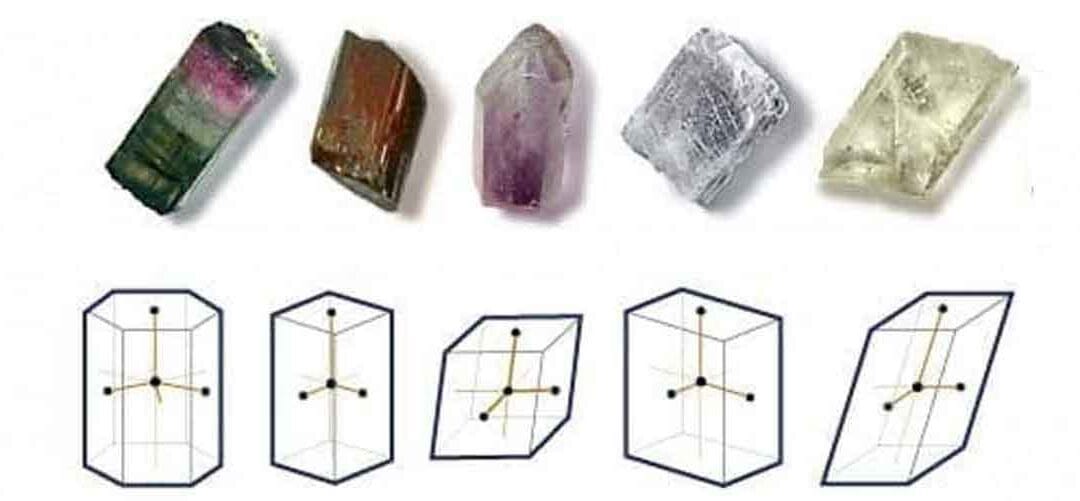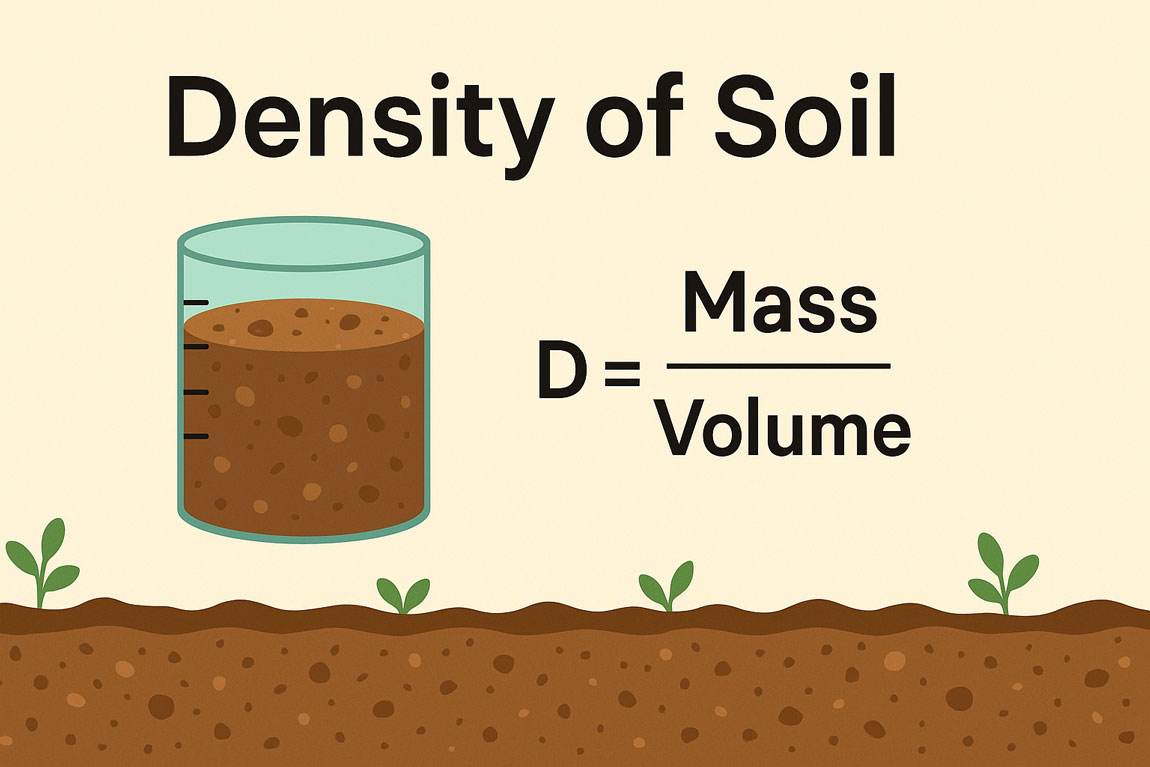A Crystal system includes all the symmetry classes that share a similar constant of lattice parallelepiped. The classes are grouped into six crystal systems based on the absence or presence of certain types of rotation axes. Also, we can say that the basis of the classification of six major crystal systems are
Criteria of crystal classification:
- Number of crystallographic axes
- Relative length of axes
- The angular relationships existing between the crystallographic axes.
Types of Crystal System:
There are six types of Crystal System
| Crystal System | Axes | Angles |
| Isometric/Cubic System | a = b = c | α = β = γ = 90° |
| Tetragonal System | a = b ≠ c | α = β = γ = 90° |
| Hexagonal System/Trigonal System | a = b ≠ c | α = β = 90°, γ = 120° |
| Orthorhombic System | a ≠ b ≠ c | α = β = 90°, γ = 120° |
| Monoclinic System | a ≠ b ≠ c | α = γ = 90°, β ≠ 90° |
| Triclinic System | a ≠ b ≠ c | α ≠ β ≠ γ ≠ 90° |
Isometric Crystal System:
All the crystals of the isometric system have three axes of equal length (a = b= c), and the angle between the two axes are equal to 90° (α = β = γ = 90°). In general, this system involves six classes of symmetries and fifteen crystal forms. The cube – is one of the easiest to recognize, and many minerals display it with little modification.

Minerals in this system are – Pyrite, Gold, Galena etc.
Tetragonal Crystal System:
A tetragonal crystal system has two axes of equal length, and the third axis is not equal to others (a = b ≠ c), and the angles between the two axes are equal to 90° (α = β = γ = 90°). A tetragonal prism is one of the 9 forms in this crystallographic system with seven classes of symmetry.
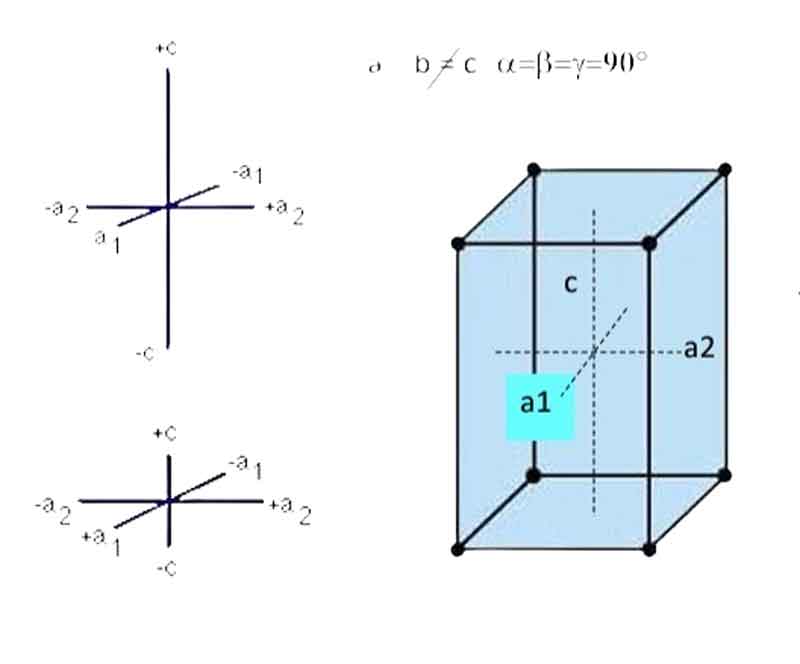
Minerals in this system are zircon, rutile, etc.
Hexagonal Crystal System:
The crystals of hexagonal systems have four crystallographic axes. Three axes, a, b, and u lie in the horizontal plane and are of equal length, whereas c is vertical and unequal to other axes (a = b ≠ c). The angle between c and with others is equal to 90°, whereas the angle between the axes a, b, and u are 120° (α = β = 90°, γ = 120°)— hexagonal division: nine forms seven classes, six-fold symmetry.
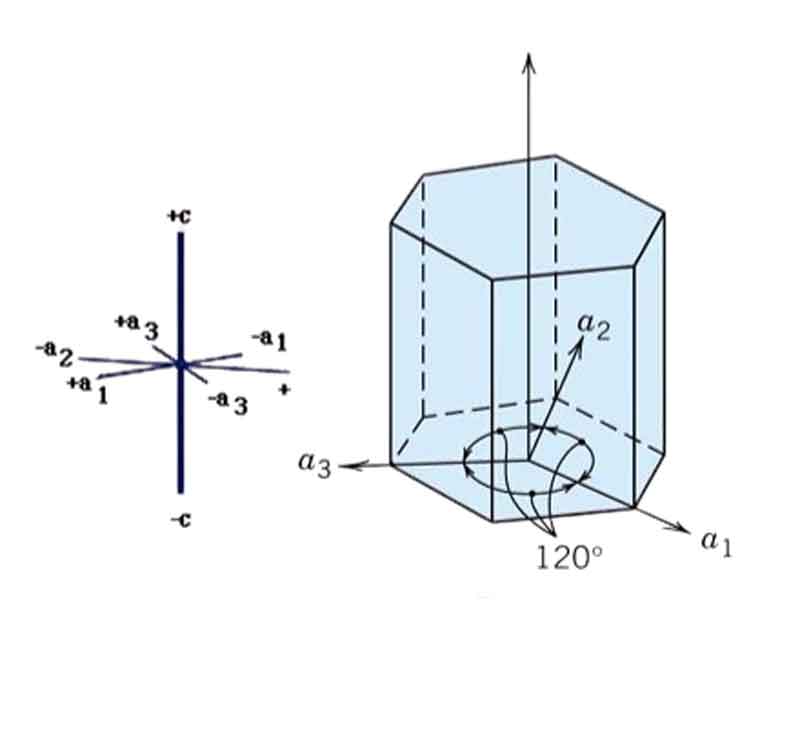
Minerals in this system are quartz, apatite, beryl, etc.
Orthorhombic System:
The crystals of orthorhombic systems have three axes of unequal length (a ≠ b ≠ c), and the angle between the two axes is equal to 90° (α = β = γ = 90°)— five forms three symmetry classes.
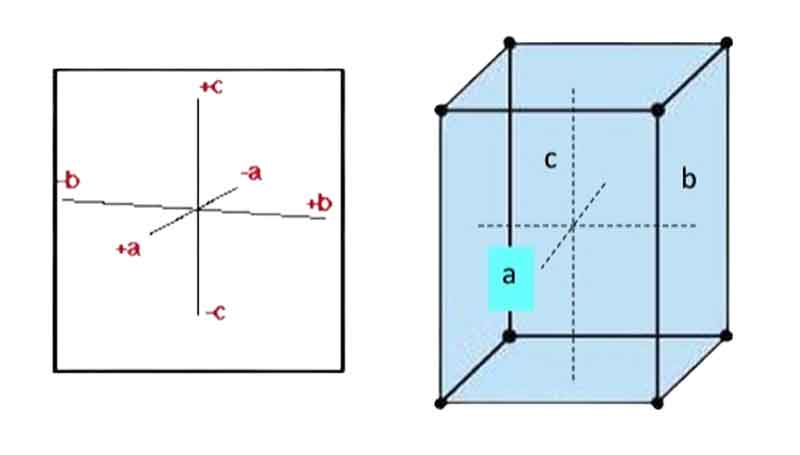
Minerals in this system are olivine, topaz, sulfur, etc.
Monoclinic System:
The crystals of monoclinic systems have three axes of unequal length (a≠ b ≠ c), and the angles of α and γ are equal to 90°, and β is not equal to 90° (α = γ = 90°, β ≠90°) Three forms three symmetry classes.
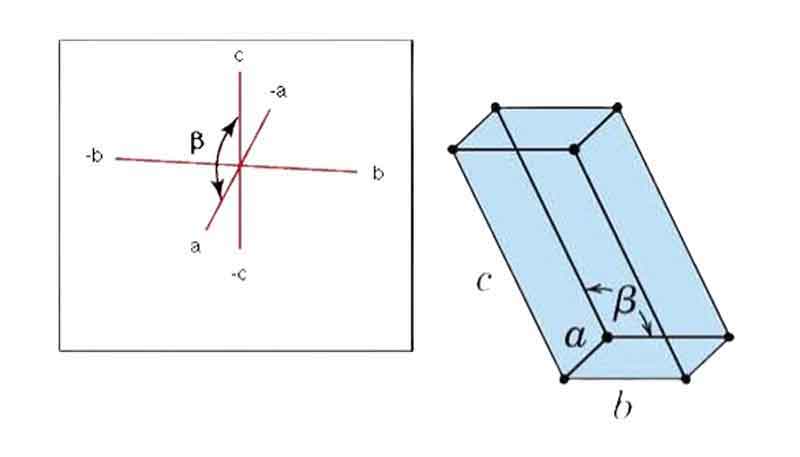
Minerals in this system are albite, microcline, and so on.
Triclinic System:
The crystals of triclinic systems have three axes of unequal length (a ≠ b ≠c), and the angle between the axes are not equal and not equal to 90° (α ≠ β ≠ γ ≠ 90°) Two forms two symmetry classes.
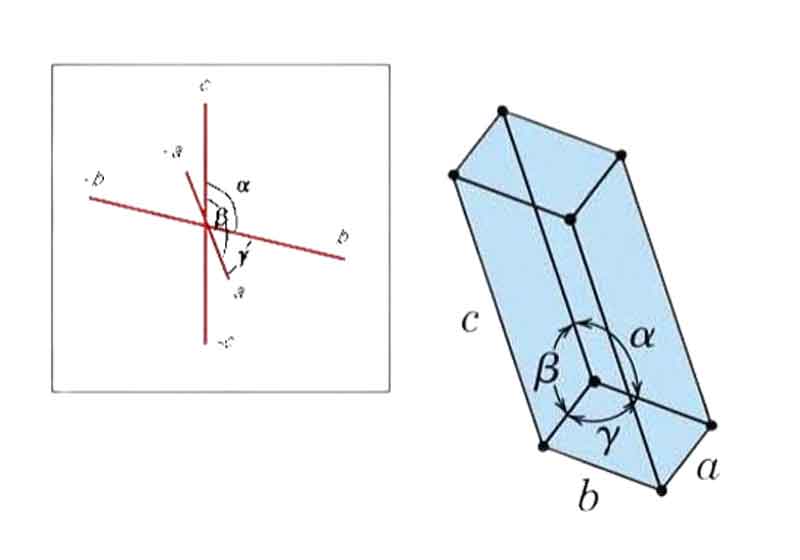
Minerals in this system are – Muscovite, Monazite, Talc, etc.

